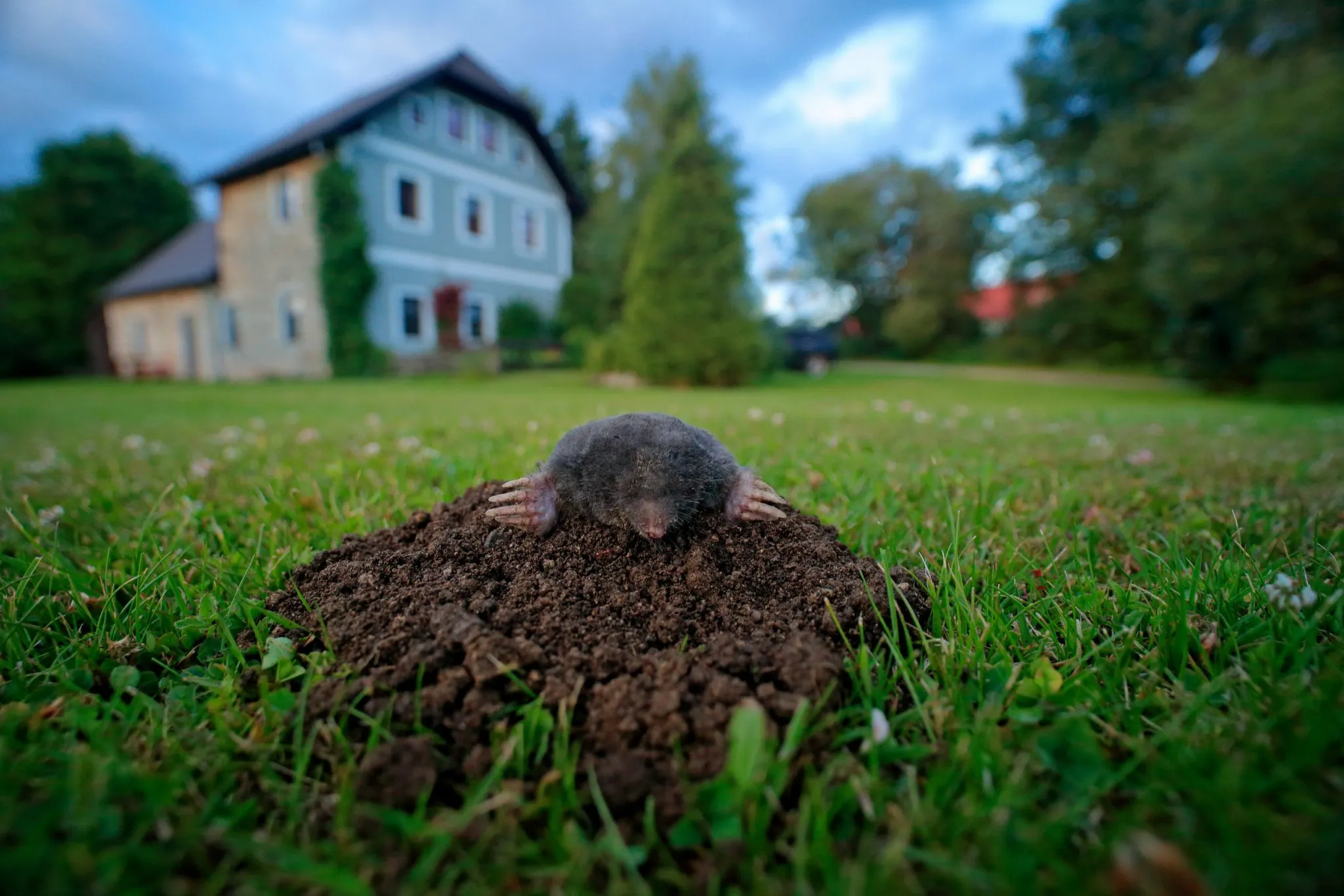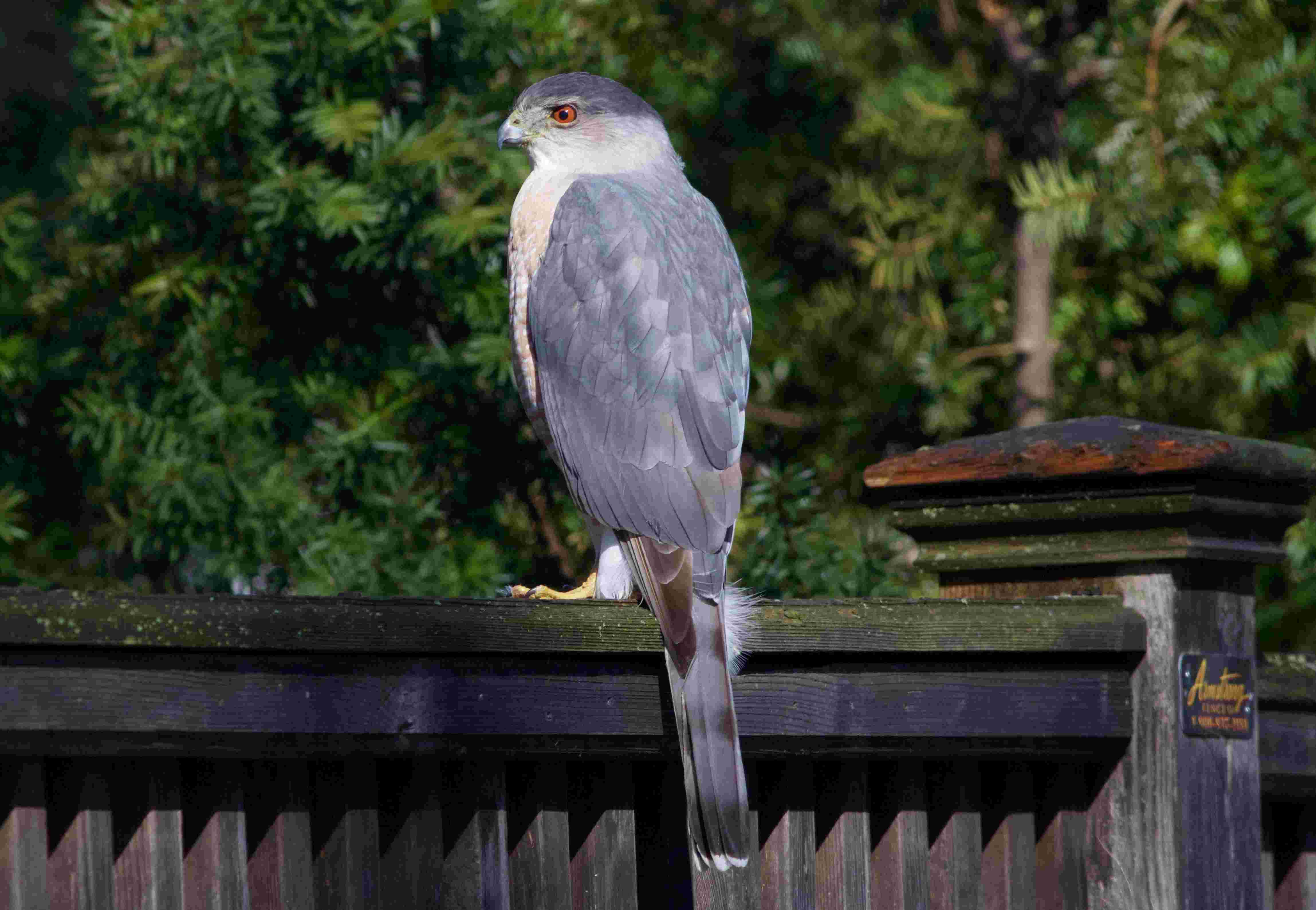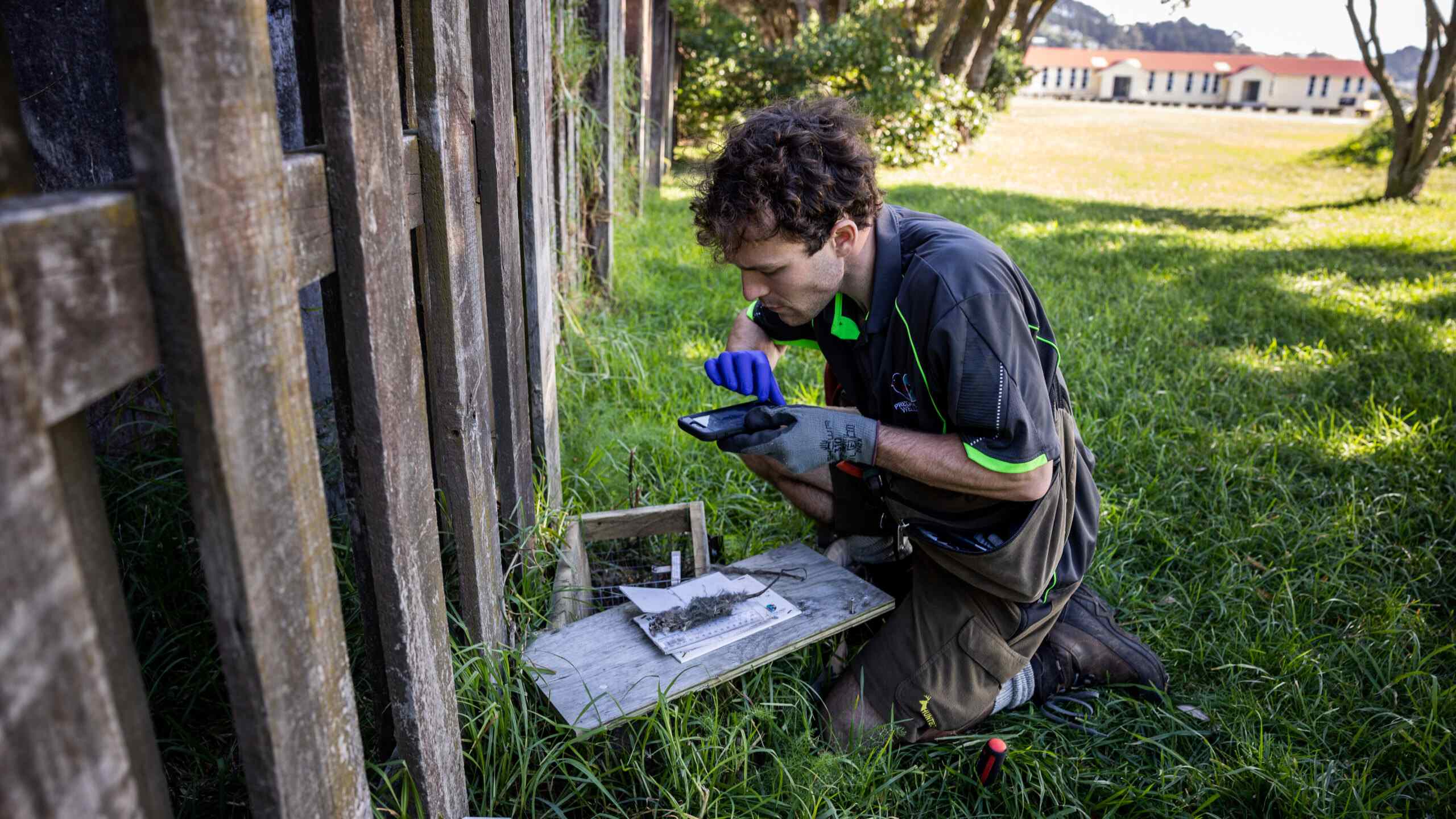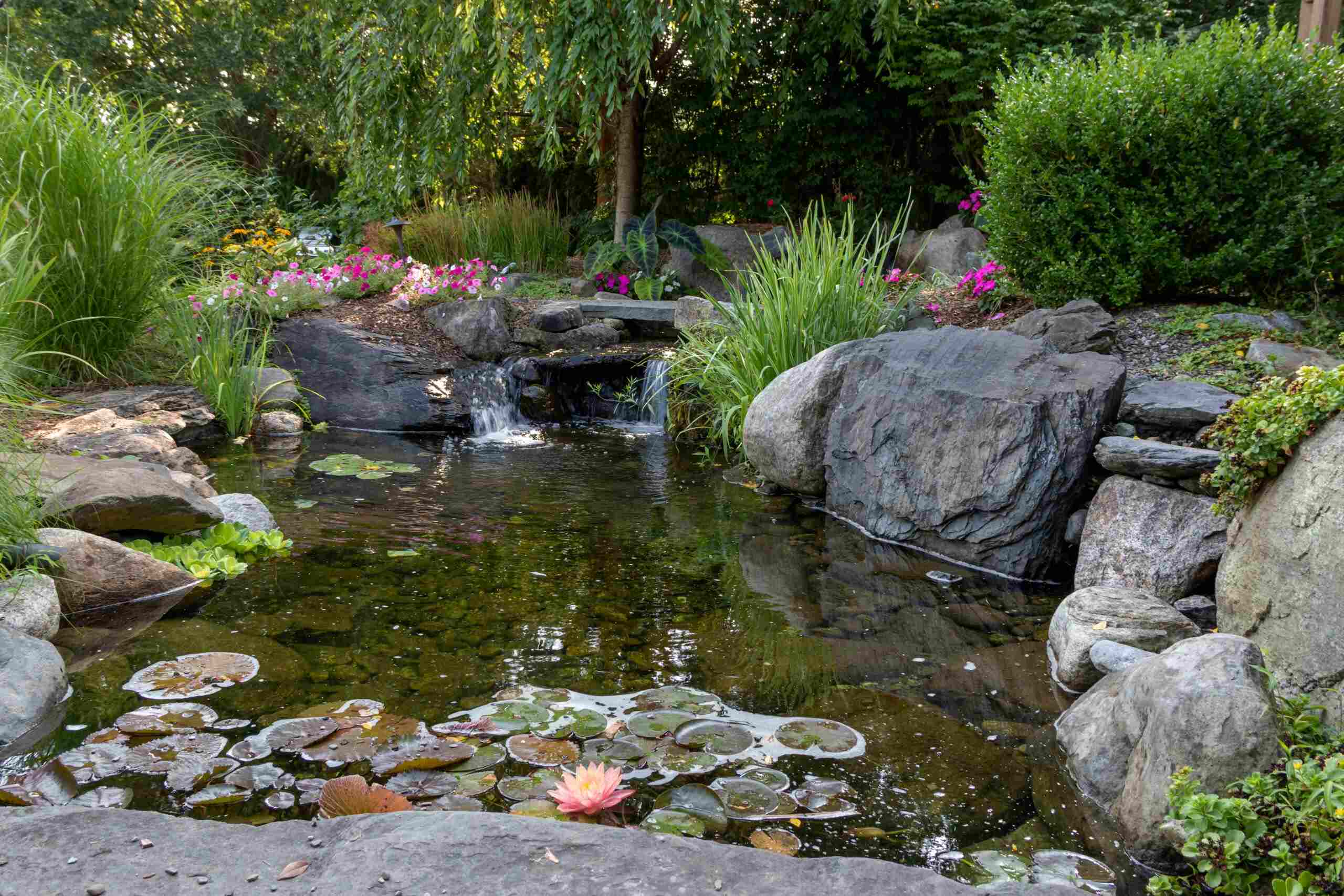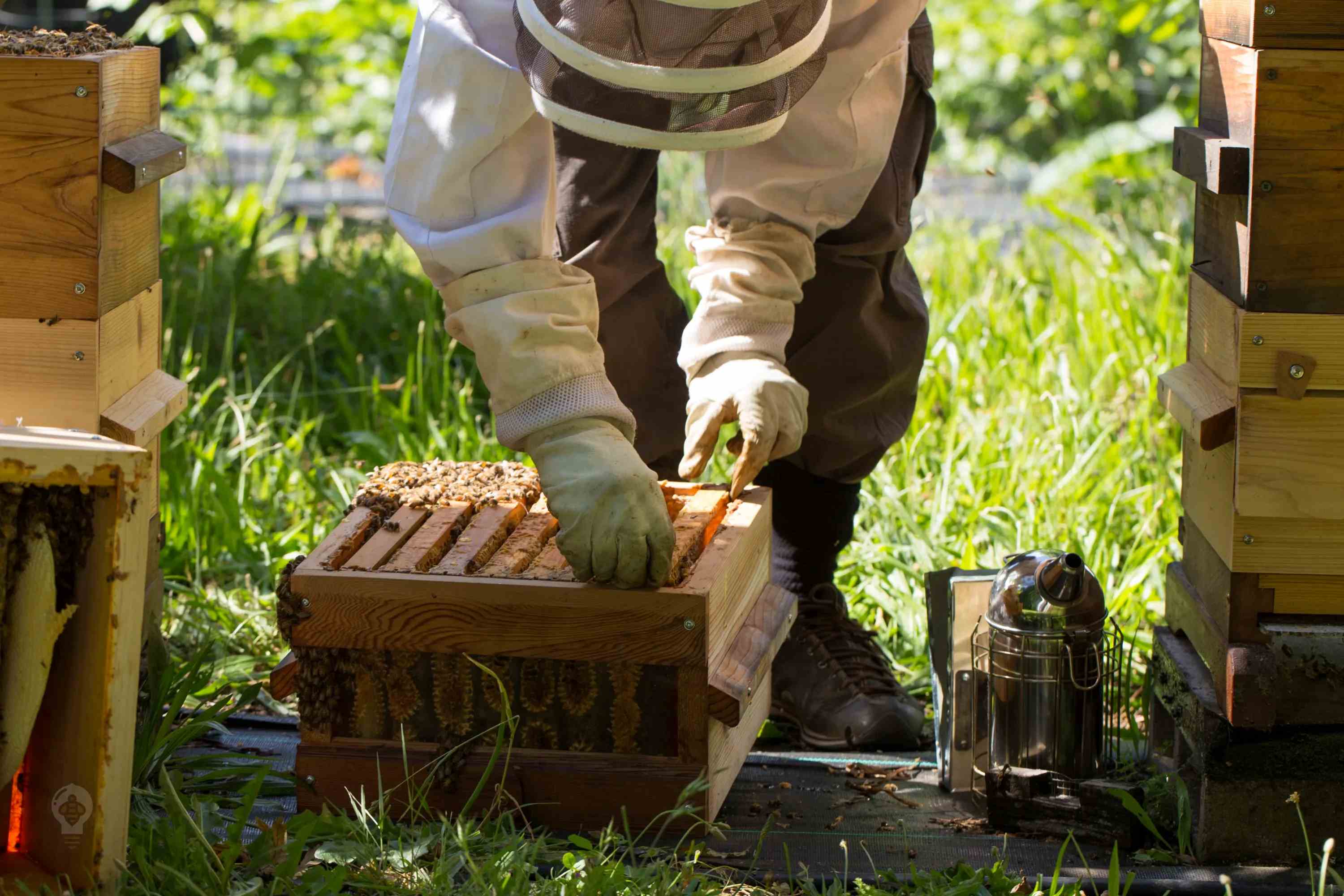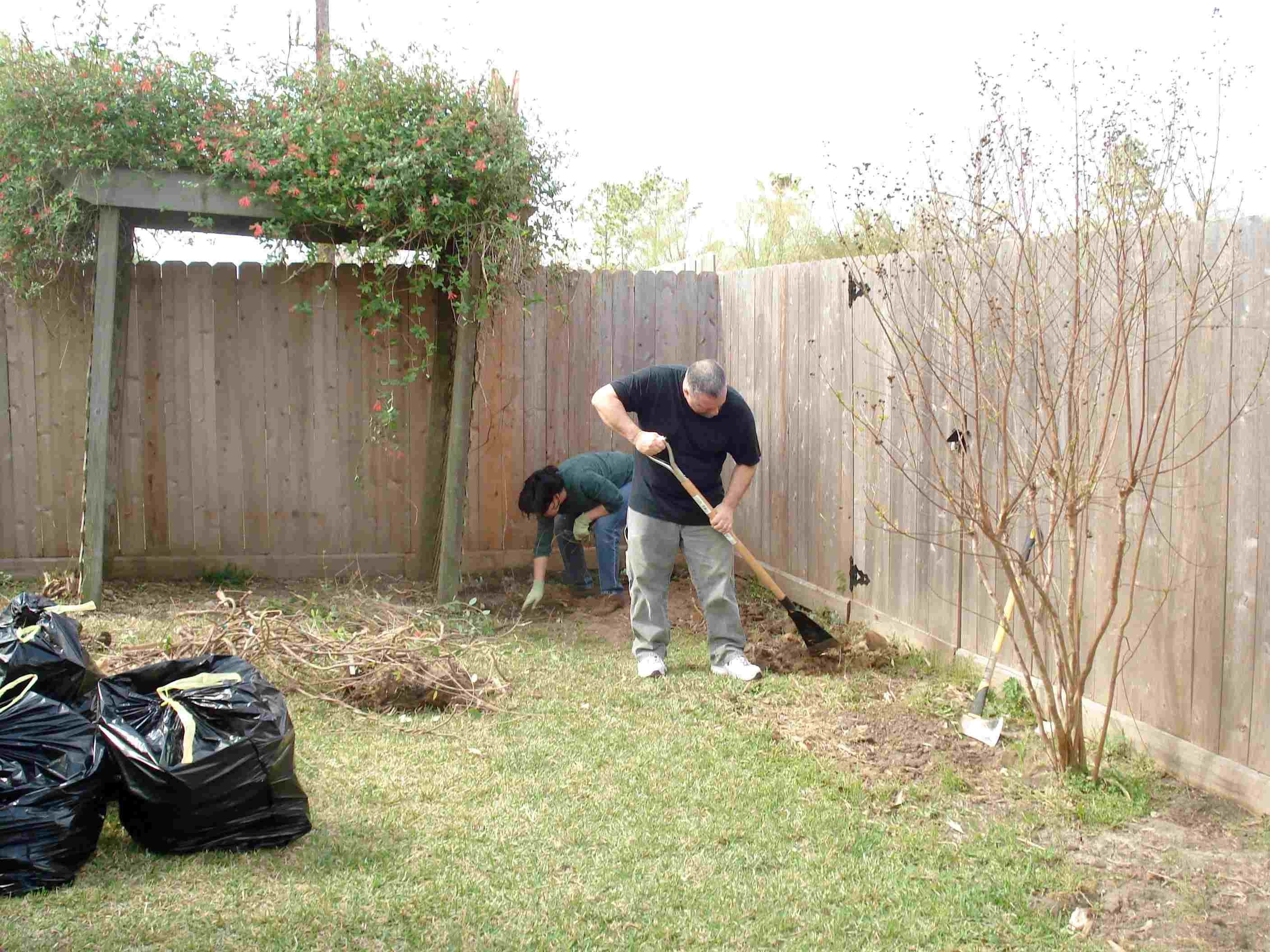Home>Gardening Tips and Tricks>How To Get Rid Of Possums In Your Backyard


Gardening Tips and Tricks
How To Get Rid Of Possums In Your Backyard
Modified: January 22, 2024
Looking for effective ways to solve the problem of possums in your backyard? Discover expert tips and tricks on how to get rid of possums and reclaim your outdoor space!
(Many of the links in this article redirect to a specific reviewed product. Your purchase of these products through affiliate links helps to generate commission for Chicagolandgardening.com, at no extra cost. Learn more)
Table of Contents
Introduction
Welcome to your backyard oasis, where you can relax and enjoy nature at its finest. But wait, what’s that rustling in the bushes? Could it be a mischievous possum wreaking havoc in your backyard? If you find yourself dealing with unwanted possums, fear not. In this article, we’ll guide you on how to get rid of possums in your backyard using both non-lethal and lethal methods, depending on your personal preferences and local regulations.
Possums, also known as opossums, are marsupials native to Australia and some parts of North and South America. While they may look cute and harmless, possums can cause significant damage to your property. They are notorious for rummaging through trash, raiding gardens, and making a mess with their droppings. Additionally, possums can carry diseases and parasites that pose health risks to humans and pets.
Before taking any action, it’s essential to determine whether you have a possum infestation in your backyard. Look out for the following signs:
- Destroyed or trampled plants
- Scattered trash or food scraps
- Noises at night, such as scratching or hissing
- Droppings resembling small pellets
- Damage to fences, wires, or structures
Once you’ve confirmed the presence of possums, it’s time to take action to eliminate or deter them from your property. For those who prefer a humane approach, we’ll explore non-lethal methods such as removing attractants, securing trash bins, installing fencing, trimming trees and shrubs, and using repellents. On the other hand, if you find that non-lethal methods are ineffective or if local regulations allow for it, we’ll also discuss lethal methods like trapping and relocation or seeking assistance from pest control professionals.
Keep in mind that various factors, such as the severity of the infestation, local laws, and the possums’ behavior, can influence the effectiveness of these methods. It may require some trial and error to find the best approach for your specific situation. With that said, let’s dive into the methods and techniques to help you bid farewell to those pesky possums and restore tranquility to your backyard.
Understanding Possums
Before we delve into the methods to get rid of possums in your backyard, let’s take a moment to understand these fascinating creatures. Possums, scientifically known as Didelphimorphia, belong to the marsupial family and are often mistakenly referred to as opossums.
Possums are native to Australia and can also be found in parts of North and South America. They are known for their unique physical features, including a prehensile tail, a pointed snout, and sharp teeth. Contrary to popular belief, possums are not rodents, but rather distant relatives of kangaroos and koalas.
One notable aspect of possums is their ability to adapt to various environments, making them highly successful in urban, suburban, and rural areas. They are opportunistic eaters, primarily feeding on fresh fruits, vegetables, nuts, insects, small animals, and even carrion.
Possums are primarily nocturnal creatures, meaning they are more active during the night. They have excellent hearing and a keen sense of smell, which aids them in finding food and avoiding predators in the wild.
When it comes to reproduction, possums have a unique reproductive strategy. Female possums have a pouch where they raise their young, known as joeys. These joeys are born in an undeveloped state and crawl into their mother’s pouch, where they continue to develop and grow.
While possums can be fascinating creatures, their presence in your backyard can become problematic. They have a habit of rummaging through trash cans, raiding gardens, and causing damage to structures. Additionally, they may carry diseases such as leptospirosis and fleas, which can pose health risks to humans and pets.
Understanding the behavior and habits of possums can help you devise effective strategies to deter them from your backyard. Now that we have a better understanding of these creatures, let’s explore the signs of possum infestation and the methods to deal with them.
Signs of Possum Infestation
Identifying the signs of possum infestation is crucial in determining whether you have these critters causing havoc in your backyard. Here are some tell-tale signs to look out for:
- Damaged or trampled plants: Possums have a voracious appetite for fresh vegetation, and they will not hesitate to feast on your plants. If you notice partially eaten or trampled plants in your garden, it could be a sign of possum activity.
- Scattered trash or food scraps: Possums are opportunistic scavengers and will raid trash cans and compost bins in search of food. If you find scattered trash or food scraps around your property, it could be a sign that possums have been rummaging through your garbage.
- Noises at night: Possums are primarily active during the night, so if you hear scratching, rustling, or hissing sounds outside your home during nighttime hours, it could be indicative of possum activity.
- Droppings resembling small pellets: Possum droppings are relatively small, oblong-shaped pellets, typically about 1-2 cm in length. If you come across these droppings in your yard or on your deck, it’s a sign that possums have been frequenting the area.
- Damage to fences, wires, or structures: Possums are skilled climbers and can cause damage to fences, wires, and structures as they navigate through your backyard. If you notice scratches or bite marks on these surfaces, it may be a sign of possum activity.
It’s important to note that while these signs indicate possum presence, they may also be indicative of other wildlife activity. If you have identified multiple signs of possum infestation, it’s likely that possums are the culprit.
By recognizing these signs, you can take appropriate measures to address the possum infestation and protect your backyard from further damage. In the next section, we will explore non-lethal methods that can help deter possums and encourage them to seek shelter elsewhere.
Non-lethal Methods to Deter Possums
If you prefer a humane approach to dealing with possums in your backyard, there are several non-lethal methods you can employ to deter them. These methods aim to make your property less attractive to possums, encouraging them to seek shelter and food elsewhere. Let’s explore some effective non-lethal methods:
- Remove Attractants: Possums are attracted to easily accessible food sources, so it’s essential to eliminate any potential attractants. Securely store pet food indoors, pick up fallen fruits or vegetables, and remove any food debris or crumbs from your yard.
- Secure Your Trash Bins: Possums are notorious for raiding trash cans in search of food. Invest in sturdy, animal-proof trash bins with tight-fitting lids or consider using bungee cords or locks to secure the lids. Additionally, avoid leaving trash bags outside overnight.
- Install Fencing: Fencing can be an effective deterrent to keep possums out of specific areas. Use a sturdy, wire mesh fence at least 4-6 feet high and bury it at least 12 inches deep to prevent possums from burrowing underneath.
- Trim Trees and Shrubs: Possums are excellent climbers, so trimming tree branches at least 6-8 feet away from your house can prevent them from accessing your roof or attic. Keep shrubs and vegetation well-maintained and away from structures to eliminate potential hiding spots.
- Use Repellents: Several natural repellents can discourage possums from entering your backyard. These include spraying areas with a mixture of water and vinegar or using specific essential oils like peppermint, garlic, or eucalyptus. Apply these repellents around potential entry points or areas of possum activity.
It’s important to note that when using repellents, they may need to be reapplied periodically, especially after rain or when the scent dissipates. Additionally, not all repellents may work effectively, as possums may become accustomed to certain scents over time. Therefore, it’s a good idea to rotate different repellents to increase their effectiveness.
Remember, non-lethal methods require consistency and patience. It may take some time for possums to be deterred from your backyard entirely. If you find that these non-lethal methods are ineffective or the infestation persists, you may need to consider lethal methods to remove the possums. We will explore these methods in the next section.
Remove Attractants
One of the key steps in deterring possums from your backyard is to remove any attractants that may entice them to stay. Possums are opportunistic eaters and are attracted to easily accessible food sources. By making your yard less enticing, you can reduce the likelihood of possums visiting your property. Here are some effective ways to remove attractants:
- Secure pet food: If you have pets that eat outdoors, make sure to remove any leftover food or empty dishes once they have finished eating. Store pet food indoors to prevent possums from being lured by the scent.
- Pick up fallen fruits or vegetables: Possums are known to enjoy fresh fruits and vegetables. Regularly check your yard for fallen produce and promptly remove them to eliminate a potential food source for possums.
- Keep your yard clean: Food debris or crumbs left in your yard can attract possums. Regularly sweep or hose down areas where food is consumed or dropped, such as outdoor dining areas or barbecue spots.
- Secure compost bins: If you have a compost bin, ensure that it is secure and tightly sealed. Possums are attracted to the rotting organic matter and may see it as a potential food source. Consider using a bin with a locking mechanism or a sturdy lid to keep possums out.
- Eliminate outdoor feeding stations: If you have bird feeders or other outdoor feeding stations, possums may be attracted to the spilled seeds or other food offerings. Consider relocating these stations away from areas accessible to possums or invest in feeders designed to deter larger animals.
By removing these attractants, you are essentially sending a signal to possums that your yard is not a reliable source of food. They will be less likely to frequent your property, and will, hopefully, seek their meals elsewhere.
It’s important to maintain consistency in removing these attractants to ensure long-term success. Possums are resilient creatures and may return if they discover a new food source in your yard.
In the next section, we’ll discuss the second non-lethal method to deter possums from your backyard – securing your trash bins.
Secure Your Trash Bins
Possums are notorious for their scavenging behavior, and trash cans can be a treasure trove of food for them. Securing your trash bins is an essential step in deterring possums from your backyard. Here are some effective ways to ensure your trash bins are possum-proof:
- Invest in animal-proof trash bins: Look for trash bins specifically designed to be resistant to animal intrusion. These bins typically have sturdy lids with latches or locking mechanisms that prevent possums from accessing the contents. Choose bins with tight-fitting lids to minimize any gaps where possums could squeeze through.
- Use bungee cords or straps: If you don’t have access to animal-proof trash bins, you can secure your regular bins with bungee cords or straps. Wrap the cords or straps tightly around the lid and the body of the bin to prevent possums from lifting the lid.
- Store trash bins in a secure area: When possums cannot access your trash bins directly, they are less likely to be enticed by the smell. Store your bins in a closed garage, shed, or fenced area to prevent possums from reaching them. Make sure the storage area is well-sealed to avoid any gaps where possums could enter.
- Remove trash bags at night: If bringing your trash bins inside is not feasible, remove the trash bags and place them in a secure location overnight. This reduces the risk of possums ripping open the bags and scattering the contents.
- Regularly clean your trash bins: Even with secure lids, trash bins can still emit odors that attract possums. Regularly clean your bins with a mixture of water and vinegar to eliminate any lingering smells that may entice possums.
By taking these measures to secure your trash bins, you significantly reduce the chances of possums rummaging through your garbage. This not only helps keep your backyard clean and free from their presence but also minimizes the risk of attracting other pests and wildlife.
Remember to consistently implement these measures and educate your family members or household members about the importance of properly securing the trash bins. Even one instance of a loosely sealed bin can be an invitation for possums to explore and potentially establish a habit of scavenging in your backyard.
In the next section, we will discuss the installation of fencing as another non-lethal method to deter possums from your property.
Install Fencing
Installing fences can be an effective way to keep possums out of specific areas of your backyard. A sturdy fence acts as a physical barrier, preventing possums from accessing your property. Here are some tips for installing possum-proof fences:
- Choose the right materials: Use a strong, wire mesh fence to deter possums. The mesh should have openings no larger than 3 inches to prevent possums from squeezing through. Galvanized steel mesh is a popular choice due to its durability and resistance against chewing or climbing.
- Consider the height: Possums are excellent climbers and jumpers. To effectively deter them, install a fence that is at least 4-6 feet high. Make sure to consider the possums’ ability to climb nearby structures or trees to access your backyard.
- Bury the fence: To prevent possums from burrowing under the fence, bury the bottom of the fence at least 12 inches deep. This helps ensure that possums cannot dig their way into your yard.
- Eliminate climbing aids: Remove any objects or vegetation near the fence that could serve as a stepping-stone for possums to climb over. Trim tree branches or shrubs that may provide access to the top of the fence.
- Secure gates: Ensure that any gates or openings in the fence are properly secured. Use latches or locks that possums cannot easily manipulate or open. Regularly check the integrity of the gate and repair any damages or gaps.
Installing a fence can be an effective long-term solution to keep possums out of specific areas, such as garden beds or outdoor patios. However, it’s important to note that possums are highly adaptable creatures, and a determined possum may attempt to overcome the barrier. Regularly inspect the fence for any signs of damage and promptly make repairs as needed.
Keep in mind that installing a fence may require local permits or adherence to specific regulations in your area. It’s important to check with your local authorities before proceeding with any fencing projects to ensure compliance.
In the next section, we’ll discuss another non-lethal method to deter possums – trimming trees and shrubs in your backyard.
Trim Trees and Shrubs
Possums are agile climbers, and trees and shrubs can provide easy access to your roof or attic. To discourage possums from using them as entry points, it’s important to regularly trim and maintain your trees and shrubs. Here are some tips for effectively trimming them:
- Keep branches away from structures: Trim tree branches that come within 6-8 feet of your house, fence, or any other structure that possums could use to gain access. Removing these branches creates a physical barrier that possums cannot easily navigate.
- Trim lower branches: Possums may use low-hanging branches as a launching pad to jump onto your roof or property. To deter them, prune lower branches to create a gap between the ground and the lowest branch.
- Remove overhanging branches: If there are branches extending over your roof or attic, possums can use them to gain access to these areas. Trim these branches back to prevent possums from reaching your roof and potentially finding entry points.
- Clear dense foliage near structures: Dense shrubs or vegetation near your house can provide hiding spots for possums. Trim or thin out these plants to eliminate potential hiding places and reduce the attractiveness of these areas to possums.
- Consult a professional arborist: If you are unsure about how to properly prune trees or shrubs, it’s best to seek the guidance of a professional arborist. They can assess your property and provide specific recommendations for trimming to deter possums effectively.
Regular maintenance of your trees and shrubs is essential to maintain an effective deterrent. Aim to trim them at least once a year, ideally during times when possum activity is low, such as late winter or early spring.
Remember to dispose of trimmed branches appropriately, as possums may use them as makeshift bridges to access your property. Remove the branches from your yard or consider chipping or shredding them for disposal.
By trimming trees and shrubs, you create a less appealing environment for possums, making it more challenging for them to access your property. This, combined with other deterrent methods, increases the effectiveness of keeping possums at bay.
In the next section, we’ll discuss the use of repellents as another non-lethal method to deter possums from your backyard.
Use Repellents
Repellents can be a useful tool in deterring possums from your backyard by creating an unpleasant scent or taste that possums find repulsive. Here are some types of repellents and how to use them effectively:
- Water and vinegar solution: Mixing equal parts water and vinegar in a spray bottle can act as a simple yet effective repellent. Spray the solution around potential entry points or areas where possums have been active. Reapply the mixture periodically, especially after rainfall.
- Essential oils: Certain essential oils, such as peppermint, garlic, or eucalyptus, are known to deter possums due to their strong scents. Dilute a few drops of the essential oil in water and spray it around your yard or near possum activity areas. Reapply the mixture regularly to maintain its effectiveness.
- Commercial repellents: There are commercially available possum repellents that are specifically formulated to deter possums. These repellents often utilize a combination of natural ingredients that possums find unpleasant. Follow the instructions provided on the product label for optimal results.
- Ultrasonic devices: Ultrasonic devices emit high-frequency sounds that are unpleasant to possums, without being audible to humans. These devices can be placed in your yard or near areas where possums are active. However, keep in mind that the effectiveness of ultrasonic devices may vary, and possums may become accustomed to the sounds over time.
When using repellents, it’s important to apply them strategically. Focus on areas where possum activity is high or where they are likely to enter your property. Pay attention to potential entry points, such as gaps in fences or holes in structures, as these areas may require additional attention.
It’s worth noting that repellents are not a foolproof solution, and possums may still test the boundaries or become accustomed to the scents over time. Therefore, it’s advisable to rotate between different types of repellents or combine them with other non-lethal methods to maximize their effectiveness.
Remember to follow the instructions provided with the repellents, as some may require regular reapplication to maintain their potency. Additionally, consider the environmental impact of the repellents you choose and opt for eco-friendly options whenever possible.
In the next section, we’ll explore the lethal methods commonly used to remove possums, such as trapping and relocation, as well as seeking assistance from pest control professionals.
Lethal Methods to Remove Possums
While non-lethal methods are often preferred for dealing with possums, there may be situations where lethal methods are necessary or permitted by local regulations. It’s important to approach these methods with caution and consider them as a last resort. Here are two common lethal methods used to remove possums:
- Trapping and relocation: Trapping possums can be an effective method for removing them from your property. Place a humane possum trap near areas of possum activity, baited with a food source such as fruits or vegetables. Follow local regulations regarding the trapping and relocation of possums. Once trapped, release the possum in a suitable habitat far away from your property. It’s crucial to use humane traps and handle possums with care to minimize stress or harm.
- Calling a pest control professional: If you’re unable to manage the possum infestation on your own or if local regulations restrict trapping and relocation, it may be necessary to seek assistance from a pest control professional. Pest control professionals have expertise in the safe and effective removal of possums. They can assess the situation, implement appropriate measures, and ensure compliance with relevant laws and regulations.
When considering lethal methods, it’s important to weigh the ethical implications and potential harm to wildlife. Always prioritize the safety and well-being of both humans and animals involved. Understanding and adhering to local laws and regulations regarding possum removal is crucial to avoid any legal repercussions.
Before resorting to lethal methods, exhaust all non-lethal measures and consider seeking advice from local wildlife authorities or animal control agencies. They can provide guidance on the best course of action and ensure that you are in compliance with regulations governing possum removal.
Ultimately, it’s important to strive for peaceful coexistence with wildlife whenever possible. If lethal methods are used, be sure to evaluate and address any underlying factors that attracted possums to your property to prevent future infestations.
Now that we’ve explored both non-lethal and lethal methods to remove possums, let’s conclude with some key takeaways and considerations.
Trapping and Relocation
Trapping and relocation is a commonly used method to remove possums from your property. It involves setting up humane traps to capture possums and then releasing them in a suitable habitat far away from your property. If you’re considering trapping and relocation, here are some key points to keep in mind:
- Choose humane traps: It is important to use traps that are designed to minimize harm to possums. Humane possum traps are specifically designed with mechanisms that prevent injury or unnecessary suffering to the captured animals.
- Identify high-activity areas: Observe the areas where possums are most active in your backyard. These areas may include the base of trees, near your garden, or along fence lines. Set up the traps in these locations to increase the chances of capturing possums.
- Bait the traps: Use appropriate bait to entice possums into the traps. Fresh fruits like apples, bananas, or melons, as well as vegetables such as carrots or sweet potatoes, can be effective bait options. Place the bait inside the trap, ensuring it is positioned in a way that triggers the trap when the possum enters.
- Check the traps regularly: Once the traps are set, it’s important to check them regularly to minimize stress and harm to the captured possums. Possums can become distressed if left in the traps for extended periods of time. Check the traps at least once a day, preferably in the morning, and release any captured possums as soon as possible.
- Release possums in a suitable habitat: When releasing captured possums, ensure you choose a proper habitat with suitable food sources, water, and shelter. The habitat should be far away from human dwellings to prevent the possums from returning to your property. Check local regulations and obtain necessary permissions for relocation if required.
- Monitor and address attractants: After removing possums, it’s essential to address any factors that may have attracted them to your backyard in the first place. Remove potential food sources, secure trash bins, and make necessary changes to your yard to avoid future possum infestations.
It’s important to note that trapping and relocation should only be considered if it is legal and ethical in your area. Local regulations may vary, and it’s crucial to adhere to them to avoid any legal consequences.
Consider consulting with local wildlife authorities or animal control agencies for guidance on trapping and relocation methods specific to your region. They can provide valuable insights and assist you in safely and ethically removing possums from your property.
Now that we’ve explored trapping and relocation, let’s move on to discussing the second method of removing possums – seeking assistance from pest control professionals.
Calling a Pest Control Professional
If non-lethal methods haven’t been effective in resolving your possum infestation or if you prefer to leave the removal process to the experts, calling a pest control professional is a viable option. Pest control professionals have the knowledge, experience, and equipment to handle possum removal safely and effectively. Here are some key considerations when seeking assistance from a pest control professional:
- Select a reputable and licensed professional: When choosing a pest control professional, do your research and select a reputable company with proper licensing and certifications. Look for professionals who specialize in wildlife management and have experience in dealing with possums.
- Assessment and customized approach: Pest control professionals will conduct a thorough assessment of your property to identify the nature and extent of the possum infestation. They will then develop a customized removal plan based on your specific circumstances and compliance with local regulations.
- Safe and humane methods: Reputable pest control professionals prioritize the use of safe and humane methods for possum removal. They will employ techniques such as trapping and relocation, ensuring minimal harm to the possums and complying with local wildlife regulations.
- Follow-up and preventive measures: A professional service should include follow-up visits to ensure the possums have been successfully removed from your property. They may also provide recommendations on preventive measures, such as securing potential entry points and removing attractants, to minimize the chances of future possum infestations.
- Environmental considerations: When choosing a pest control professional, opt for those who prioritize eco-friendly practices. They should take measures to minimize environmental impact and avoid the use of harmful chemicals or methods that may disrupt the natural ecosystem.
- Compliance with regulations: Ensure that the pest control professional follows all applicable local laws and regulations regarding possum removal. This includes obtaining necessary permits or permissions and adhering to humane wildlife management guidelines.
By calling a pest control professional, you can have peace of mind knowing that the removal process is being handled by trained experts. They have the knowledge and resources to address the possum infestation effectively, minimizing any risks or complications associated with the removal process.
Keep in mind that hiring a professional service comes with a cost, so consider your budgetary considerations when deciding whether to seek assistance from a pest control professional or explore non-lethal methods on your own.
Now that we’ve discussed the options for lethal methods involving trapping and relocation, as well as seeking assistance from pest control professionals, let’s conclude the article by summarizing the key points and considerations.
Conclusion
Dealing with possums in your backyard can be a frustrating experience, but with a combination of non-lethal and, if necessary, lethal methods, you can effectively deter or remove them from your property. Here are the key takeaways:
Understanding possum behavior and recognizing signs of infestation are crucial in implementing the appropriate methods. Look out for damaged plants, scattered trash, night-time noises, droppings, and damage to fences or structures as indications of possum activity.
Non-lethal methods, such as removing attractants, securing trash bins, installing fencing, trimming trees and shrubs, and using repellents, aim to make your backyard less inviting to possums. These methods encourage them to seek food and shelter elsewhere.
If non-lethal methods are ineffective or if local regulations permit, lethal methods like trapping and relocation or seeking assistance from pest control professionals can be considered. These methods should adhere to humane guidelines and all applicable laws and regulations.
Remember to evaluate the ethical implications of using lethal methods and explore non-lethal alternatives first. Strive for peaceful coexistence with wildlife whenever possible.
Whether you choose non-lethal or lethal methods, implementing them consistently and addressing underlying factors that attract possums to your backyard are essential for long-term success.
Lastly, always prioritize the safety and well-being of both humans and animals throughout the removal process and seek guidance from local wildlife authorities or pest control professionals if needed.
By taking the appropriate measures to deter or remove possums, you can reclaim your backyard and create a harmonious environment that allows you to enjoy nature without the unwanted presence of these critters.
Keep in mind that possum encounters may vary, and it’s important to adapt your strategies to your specific situation. With patience, persistence, and a combination of effective methods, you can successfully manage possum infestations and restore tranquility to your outdoor space.

